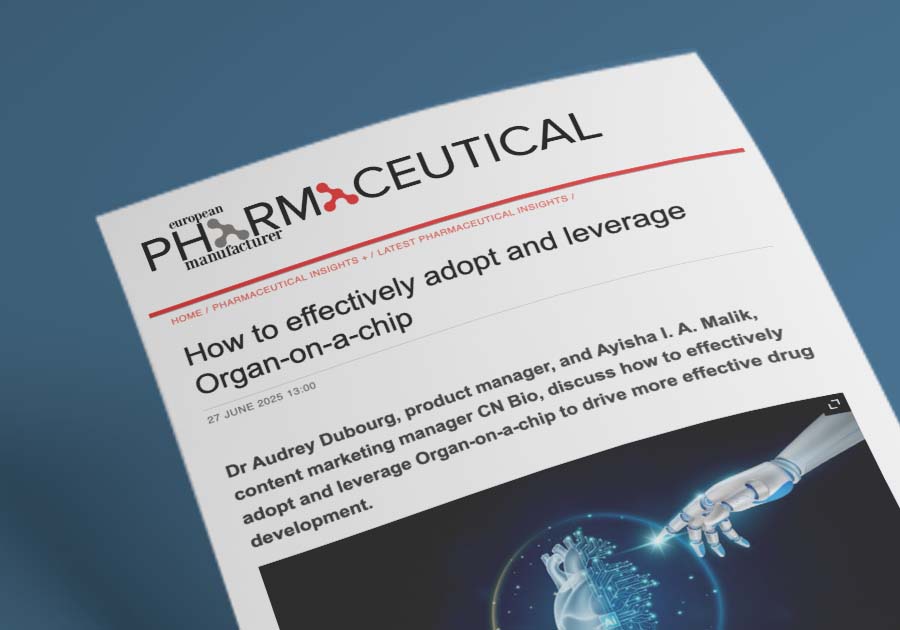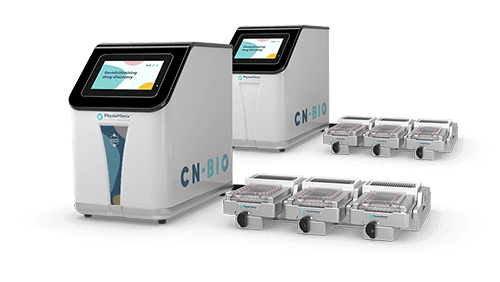Resource > Articles >
How to effectively adopt and leverage Organ-on-a-chip
7 key factors to guide your selection
Filed under: ADME, DILI, Disease modeling, Drug bioavailability, MASLD/MASH, Oligonucleotide delivery, and Safety toxicology

Discover seven key factors to guide your pharmaceutical teams in selecting an Organ‑on‑a‑chip (OOC) system that suits your specific needs. By understanding these elements, you can adopt and leverage Organ-on-a-chip technologies within your preclinical workflows more effectively.
- Determining the best OOC model for preclinical testing needs
It is important to choose an OOC system that is able to address your requirements, and it is often the simplest model that satisfies your study objectives. For example, to identify human‑specific metabolites and predict hepatic clearance, a basic Liver‑on‑a‑chip model with only primary human hepatocytes would be sufficient. On the other hand, when assessing drug induced liver injury (DILI), a co‑culture model including Kupffer cells adds sensitivity and highlight immune activation beyond standard in vitro and a basic Liver MPS model.
Fitting model complexity to the context of use avoids over‑engineering, which increases cost without adding value.
- What are your data output requirements?
Next, identify the data and the level of detail you require. For more in-depth analysis, platforms that offer larger volumes of recoverable tissue and media are best. Feasible endpoints include biomarker analysis, cell health, functional assays, and -omics, but to translate OOC insights into human outcomes, detecting clinically relevant markers is critical.
For example, biomarkers such as ALT, AST, and albumin help assess liver function and damage and therefore are important in a DILI assay. If -omics studies are required, choose a platform where the tissue is easily accessible and adequately sized. For secreted biomarkers or imaging, a system with sufficient media, easy sampling, and transparent materials is ideal; keeping in mind PDMS limitations.
- Off-the-shelf options or pre-validated models?
Consider whether your needs can be met with an off-the-shelf or kit-based OOC solution. All-in-one kits such as our NASH-in-a-Box, DILI assay kit, and Bioavailability assay kit offer a faster, more reliable entry point by eliminating the need for assay development and validation. Even without prior experience, you can achieve consistent, reproducible results. Since most OOC systems use primary cells, kits also save you the effort of validating donor cells, 60% of which typically fail to form 3D tissue. Kits provide pre-qualified cells and optimized media, reducing time, cost, and complexity.
If kits aren’t available, partnering with suppliers, who offer validated models and protocols can help streamline your assay development process.
- Effective experimental design
A well-thought out design is the foundation of your OOC assays. Include proper controls and replicates to ensure your results are reliable and reproducible. Using a multi-chip plate-based system can enhance both depth and scale, offering detailed mechanistic insights while enabling high-throughput testing.
- Drug binding concerns
The materials used in your OOC system affect data accuracy. Materials that cause non-specific binding can skew results – while PDMS is common and allows for easy imaging, its lipophilic nature means it can absorb up to 70% of a drug, making it hard to measure true drug responses. Although data can be normalized, choosing materials with lower binding properties, like cyclic olefin copolymer (COC), can improve accuracy and reliability.
- Fluidic flow
Fluidic flow is essential for OOC systems. It supports cell function and viability, as well as long-term tissue culture. Systems on the market apply various flow methods. Gravity-driven setups are simple and high-throughput but lack realistic blood flow. Single-path systems better mimic physiology but can dilute biomarkers and exclude immune cell circulation. Loop-based systems, such as those found in the PhysioMimix OOC Systems, most accurately replicate blood flow without dilution but may require extra media changes before dosing. Some platforms even adjust flow type to suit specific organs. For the best results, choose a flow system that fits your experimental goals, organ model, and timeline.
- Setting up your lab and team
If you already have a cell culture setup, integrating OOC technology is relatively simple. Systems where most components operate outside the incubator offer better reliability and easier maintenance.
Building in-house expertise is also straightforward, especially if you start with ready-to-use kits. Remember, you’re not alone, suppliers often offer training and technical support to help your team gain confidence and overcome challenges. If you’re new to OOC, take advantage of expert guidance to accelerate your success.
Conclusion
Labs around the world are adopting OOC to gain deeper insights earlier in their drug development pipelines and better prepare for clinical success. With a wide range of models, assays, and features available from various suppliers, you can quickly adopt and leverage Organ-on-a-chip to enhance the speed and efficiency of your drug development process.
This article was originally published on 27 June 2025 in the European Pharmaceutical Manufacturer.

Dr. Audrey Dubourg
Product Manager (Former)

Ayisha Malik
Content Marketing Manager


